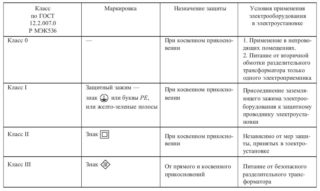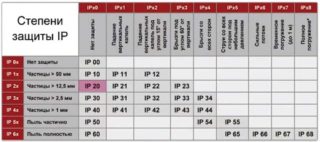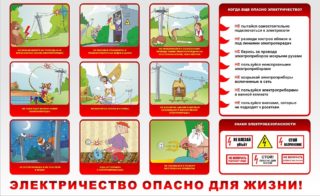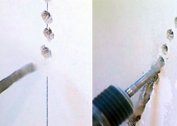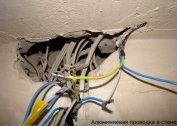Residential, office and other buildings are filled with a huge amount of electrical household appliances, appliances and equipment. Live devices present a potential hazard to human life and health. To determine its degree, such a concept as the class of protection against electric shock (KZ) has been developed. It includes a list of insulating materials, fuses and a system of notations that are applied on plates with service information to the product. Knowing and understanding the meanings of the symbols will make the right choice when buying, operating and maintaining electrical equipment.
Standardization
The classification of products by the level of consumer protection against the damaging factors of electricity is standardized and determined by the provisions of GOST R IEC 61140-2000.
The electrical protection class of devices is indicated as follows:
- 0 - complete absence, in the presence of working isolation of communications;
- 00 - indication of the presence of current;
- 000 - availability of an emergency shutdown relay;
- 0I - grounding provided;
- I - grounding installed at manufacture;
- I + - in addition to grounding, there is an RCD;
- II - double reinforced insulation;
- II + - RCD and double reinforced insulation;
- III - the absence of high voltage, dangerous for living organisms.
There is a classification according to the degree of protection of electrical equipment from penetration into the water and solid objects to live lines and nodes (IP).
- 0 - absence;
- 1 - from the hand;
- 2 - from the finger;
- 3 - from a screwdriver;
- 4 - from the wire;
- 5 - from spray;
- 6 - from all external factors.
Using the short circuit marking, the manufacturer informs the user about the conditions under which the product can be operated.
Operating principle
 Classes of electrical appliances are determined based on current standards or experimentally. The second method is selected in cases where the product has no analogues in the world or domestic market.
Classes of electrical appliances are determined based on current standards or experimentally. The second method is selected in cases where the product has no analogues in the world or domestic market.
When determining the short circuit, such factors are taken into account:
- mains voltage;
- current strength;
- power consumed by the consumer;
- ambient temperature
- air humidity;
- installation of a core or ground terminal;
- tightness of the case;
- forced cooling;
- structural stability;
- body strength;
- the presence of enclosing devices.
The conclusion about the assignment of a product to a particular short circuit is made on the basis of a study of its design and the degree of risk for each technical parameter.
Standard application
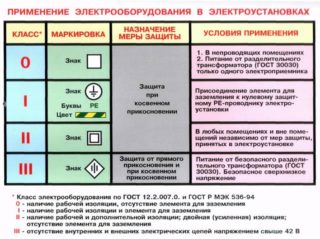 Knowledge of electrical safety standards is the basis for long-term and trouble-free operation of equipment operating from both direct and alternating current.
Knowledge of electrical safety standards is the basis for long-term and trouble-free operation of equipment operating from both direct and alternating current.
Zero-class products can be used in dry rooms, with the guarantee of the absence of contact with water or fumes. In this case, the possibility of accidental damage to the housing or power cable is excluded in advance.
Manual and stationary equipment of class I can only be used for production purposes, it can not be sold freely. You need to work with such equipment using a special belt, with gloves, on an insulating rug, with the door closed.
Portable tools and fixtures are made in a protective version, corresponding to II-III classes. At the same time, for working in a humid environment, products are produced that operate on direct current up to 50 V or on alternating 220 V, but in a sealed design.
Modern household appliances and tools comply with II KZ. All types of products are equipped with a three-wire cable and a socket with a ground terminal. In its absence, safety is guaranteed by reinforced insulation, relays and fuses.
Household networks
Almost all residential buildings built in the last century are equipped with two-core cables with phase and zero. To make grounding, it is necessary to change the sockets and pull an additional core to the shield. Since it is difficult and expensive, most of the residents refused it. Because of this, household networks are a certain danger and belong to 0 short circuit.
In the new houses, three-core cables are laid, immediately connected to the grounding circuit. Depending on the type of insulation and the presence of a signal indicator, such lines correspond to I or II KZ.
Device design
Electrical appliances belonging to the categories of safety class have a standard device:
- Power cable Equipped with insulation of the corresponding short-circuit quality.
- Contacts. They represent the junction of the cable with the working equipment.
- Live parts. The part of the product to which current is applied after switching on.
- Non-conductive parts. Touchable parts of the device that may be energized in the event of an accident.
- Body. Designed to protect the working part of the product from mechanical stress and moisture.
Protection classes
 Protection class 1 from electric shock have household appliances with high power. These include washing machines and dishwashers, boilers and microwave ovens. Operational safety is achieved by connecting non-conductive metal parts to a common grounding cable. A condition for compliance with the requirements for this class is the availability of a special outlet with a grounding contact.
Protection class 1 from electric shock have household appliances with high power. These include washing machines and dishwashers, boilers and microwave ovens. Operational safety is achieved by connecting non-conductive metal parts to a common grounding cable. A condition for compliance with the requirements for this class is the availability of a special outlet with a grounding contact.
Devices of this category can be used in everyday life, educational institutions, offices and catering establishments with almost no restrictions. They should not be installed in humid rooms such as saunas and showers.
If the first short circuit provides a relative guarantee of safety, the second class guarantees protection by installing reinforced insulation to prevent electric shock. All hand tools, street lighting and electric vehicles are equipped with such devices.
The third short circuit initially excludes the very possibility of adverse events associated with voltage. Reduced direct current can only cause discomfort. Such devices include cell phones, watches, lights, radios.
Networks and Connectors
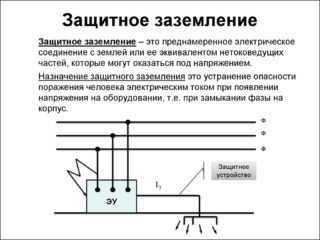 In everyday life and industry, lines with 1, 2 and 3 phases, zero and ground are used. The power of the network is determined by the cross section and material of the cable. The houses use copper wires with a cross section of conductors up to 2.5 mm. The restriction is made to prevent overloading the home network.
In everyday life and industry, lines with 1, 2 and 3 phases, zero and ground are used. The power of the network is determined by the cross section and material of the cable. The houses use copper wires with a cross section of conductors up to 2.5 mm. The restriction is made to prevent overloading the home network.
When connecting products, these types of connections are used:
- plug;
- terminal block;
- bolts and nuts;
- clamps.
The choice is determined by the instruction manual of the device.
Grounding in electrical installations is a guarantee against human injury by high voltage current. This can occur if the integrity of the insulation is violated, the device breaks or accidentally touches the live part. A powerful copper cable with a cross section of at least 5 mm is used for grounding.
EB for children
To protect children from electric shock, the following measures are taken:
- preventive work (lectures, educational films, security corner);
- installation of plugs on sockets;
- the use of high-end safety equipment.
If possible, all devices should be installed out of the reach of children.
Interesting Facts
Safety standards are constantly improving. As a result, European countries prohibit the use of class 0 products in everyday life.
To ensure complete travel safety in trolley buses, modern models are equipped with conductive wheels that provide reliable grounding.
Even new generation televisions have open live parts: connectors and sockets.
It should be remembered that in the USSR heaters with an open spiral were popular - the most dangerous products that were assigned a quality mark.

